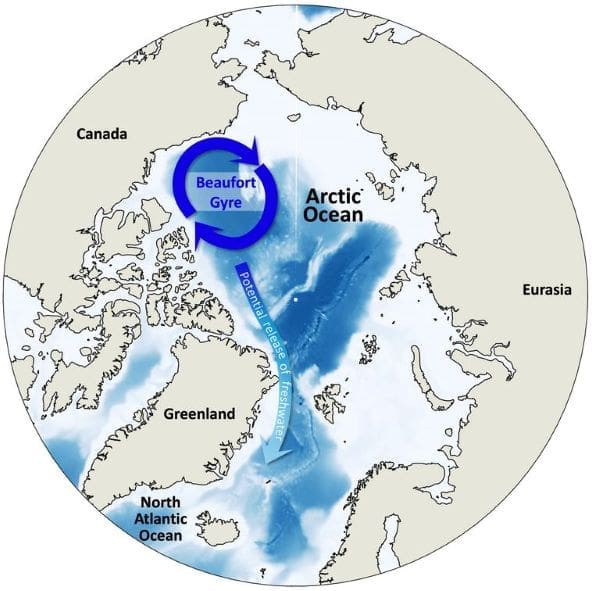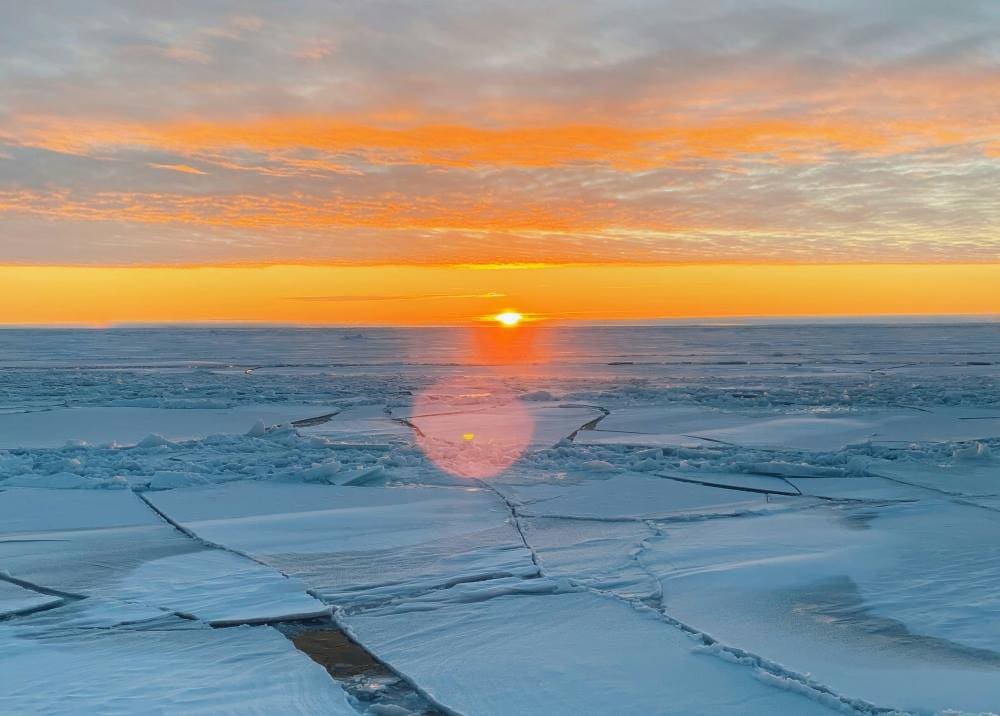Summary:
The Beaufort Gyre, a major Arctic Ocean current, plays a crucial role in regulating freshwater distribution between the Arctic and North Atlantic.
However, new research published in Journal of Geophysical Research: Oceans suggests that this circulation could weaken or even disappear by the end of the century due to thinning sea ice and atmospheric changes. Scientists from the University of Gothenburg and the Alfred Wegener Institute analyzed climate models and found that as Arctic sea ice declines, the weakening of the Beaufort High pressure system could disrupt the gyre. This could lead to a massive release of freshwater into the North Atlantic, potentially weakening the Atlantic Meridional Overturning Circulation (AMOC) — a key driver of global ocean currents.
While uncertainties remain, the study raises concerns about a possible ‘tipping point’ that could have widespread climate impacts.

Thinner Arctic sea ice may affect the AMOC
The weakening of the AMOC, Atlantic Meridional Overturning Circulation, is a hot topic among the world’s climate scientists. However, it is unclear what the consequences will be when the ocean currents change and when a ‘tipping point‘ is reached. Researcher Céline Heuzé from the University of Gothenburg, together with colleagues Marylou Athanase and Raphael Köhler from Germany, has studied the future of one of the major ocean currents in the Beaufort Sea, located in the Arctic Ocean, north of the Alaskan and Canadian coasts.

This current is the Beaufort Gyre and it is an important feature of the Arctic Ocean. By storing or releasing freshwater, it influences the oceanic properties both within the Arctic and as far away as the North Atlantic.
Due to warmer temperatures in the Arctic, the Beaufort Gyre is currently losing large amounts of sea ice. The ice helps keeping the ocean cool, acting as a lid. Thinner sea ice allows more heat from the atmosphere to pass through, raising sea temperatures further and causing even more sea ice to disappear.
Previous research shows that the freshwater content of the Beaufort Sea has increased by 40 percent over the last two decades.
Concerns about sea ice ‘tipping point’
“The results of this study make us concerned that the reduction of sea ice in the area could lead to a tipping point where the AMOC collapses,” says Céline Heuzé, Senior Lecturer in Climatology at the University of Gothenburg and an expert on deep ocean and sea ice.
In the study, the researchers made projections using only the global climate models that can accurately represent the Beaufort Gyre. A climate model is a computer simulation of the Earth’s climate system – atmosphere, ocean, land and ice. Climate models are used to reconstruct the past climate or predict the future climate.
“If greenhouse gas emissions are not reduced urgently, this projection suggests that the Beaufort Gyre will weaken and release the freshwater that it currently holds. This freshwater could then reach the North Atlantic and possibly negatively impact the AMOC,” says Marylou Athanase, researcher at Alfred Wegener Institute, Germany, and first author of the study.
The AMOC, of which the Gulf Stream is a part, is of great importance for the climate in Scandinavia as it transports warm water to high latitudes in the northern hemisphere. How the link between reduced Arctic sea ice and a weakening of the AMOC may develop in the future is something the researchers now want to study more closely.
Journal Reference:
Athanase, M., Köhler, R., Heuzé, C., Lévine, X., & Williams, R., ‘The Arctic Beaufort Gyre in CMIP6 models: Present and future’, Journal of Geophysical Research: Oceans 130, 4, e2024JC021873 (2025). DOI: 10.1029/2024JC021873
Article Source:
Press Release/Material by Faculty of Science and Technology | University of Gothenburg
Featured image credit: Daniel Fatnes | Unsplash




